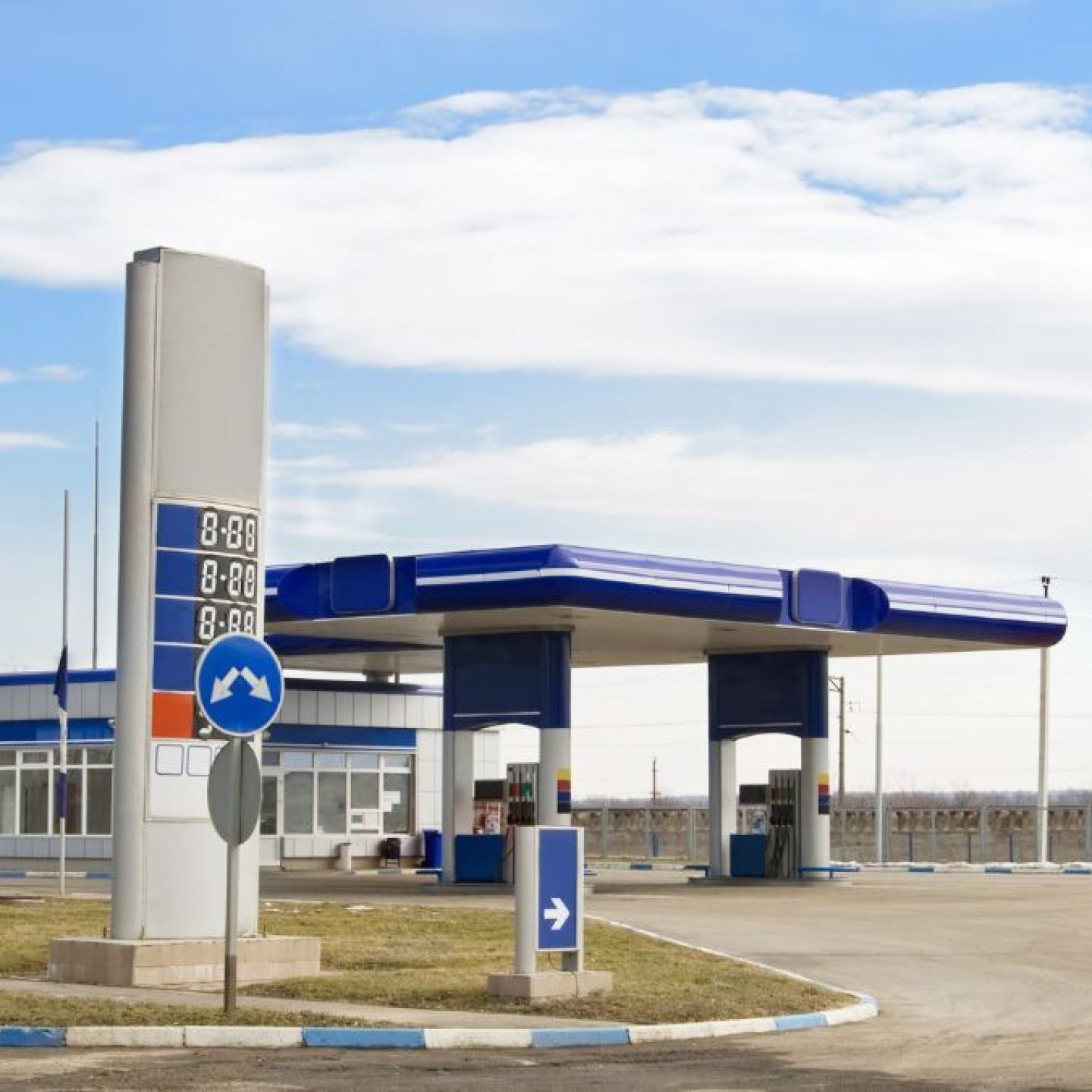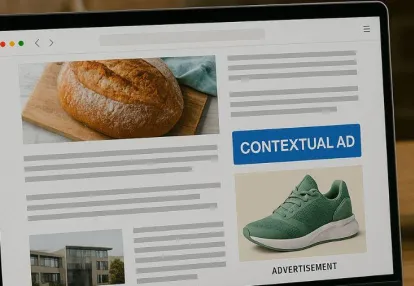
Our spy tools monitor millions of native ads from over 60+ countries and thousands of publishers.
Get StartedWhen you stop at a gas station, you often encounter various advertisements. These gas station ads may appear on digital screens at the pump or within the convenience store. The question arises: Are gas station ads considered native ads?
Native advertising is characterized by its ability to blend seamlessly into the surrounding content, providing a non-disruptive experience for the viewer. This type of advertising is designed to look and feel like the media format in which it appears. For instance, Anstrex offers insights into building winning native advertising campaigns.
Gas station ads primarily fall under the category of Digital Out-of-Home (DOOH) advertising. While they can exhibit elements of native advertising, such as contextual relevance and alignment with their environment, they often lack the seamless integration that defines true native ads. A recent discussion on Reddit highlights some design aspects of gas station ads that may disrupt user experience.
The gas station advertising landscape has evolved significantly, especially with the rise of digital out-of-home (DOOH) advertising. This form of advertising merges the expansive reach of traditional OOH formats with the adaptability and precision of digital technology. By incorporating real-time updates and advanced targeting, DOOH at gas stations engages consumers effectively at specific locations.
Several types of ads are commonly found at gas stations:
In-location advertising strategies leverage these various ad formats to target consumers in a moment where they are likely to make impulse purchases. By understanding the nuances of each format, businesses can create more effective campaigns tailored to their audience's behaviors and preferences.
The design impact on gas station ads effectiveness cannot be overstated. Well-designed ads can seamlessly blend into the environment, making them feel more native to drivers and passengers. Key elements include:
Emotional appeal and visual aesthetics play a pivotal role in influencing consumer behavior at fuel pumps. Ads that evoke emotions such as happiness, nostalgia, or even urgency can drive immediate actions. For instance:
Aesthetic elements like high-quality graphics and engaging animations also capture attention better than static visuals. When these elements are combined effectively, they create a compelling narrative that resonates well with drivers.
Consider an ad promoting a new coffee blend available inside the convenience store. If designed with warm colors and images of steaming cups of coffee, it not only advertises the product but also enhances the overall refueling experience by tapping into consumers' senses and desires.
Incorporating these design elements ensures that gas station ads aren't just background noise but become an integral part of the refueling process.
Out-of-home (OOH) native ads are advertisements designed to blend seamlessly into their physical environment, ensuring they feel like a natural part of the surrounding space. Unlike traditional OOH ads that are often disruptive or visually distinct from their setting, native OOH ads aim for a more integrated and contextually relevant approach.
OOH native ads play a crucial role in enhancing consumer engagement by making advertisements less intrusive and more engaging. These ads leverage the physical context to deliver messages that resonate more deeply with audiences. For example, an ad for a new snack might be placed strategically near a convenience store within a gas station, making it feel like a natural suggestion rather than an overt sales pitch.
While gas station ads may not traditionally fit the classic definition of native ads found in online media, they can exhibit similar characteristics. When these ads are tailored to fit the aesthetic and purpose of their gas station environment—such as promoting snacks available inside the convenience store—they can be perceived as more native. The degree to which gas station ads are considered native depends significantly on their design and contextual relevance.
Evaluating the effectiveness of gas station ads through a native advertising lens involves specific Key Performance Indicators (KPIs) that focus on engagement and relevance. Understanding these metrics helps you optimize your campaigns for better results.
By focusing on these KPIs, you can gain valuable insights into how effectively your gas station ads function as native advertising. This data-driven approach ensures your campaigns are not only reaching but also resonating with your target audience.
Understanding the different advertising formats available at gas stations helps you make informed decisions about where to allocate your marketing budget. Here, we compare three primary types: billboards, digital screens, and nozzle ads.
"Static messages on billboards can miss the chance for interaction that dynamic ads on digital screens provide."
"Nozzle ads benefit from close proximity to consumers, making them hard to ignore during refueling."
Understanding these differences allows you to choose the most effective format based on your campaign goals, budget, and desired level of consumer interaction.
When considering budget-friendly strategies for gas station advertising campaigns, there are several practical tips you can follow to maximize your investment:
Digital screens at fuel pumps and convenience stores offer dynamic content capabilities. Prioritize these screens as they allow for real-time updates and targeted messaging, ensuring your ads remain relevant and engaging.
Design ads that seamlessly integrate with the gas station environment. For example, promoting snacks or beverages available inside the convenience store can resonate more with drivers, making your campaign feel more native.
Partner with local businesses to co-promote products or services. This can help share costs and enhance the ad's relevance to the local audience.
Analyze customer traffic patterns at gas stations and schedule your ads during peak times. This ensures higher visibility and better engagement without increasing overall costs.
Geotargeting allows you to tailor content based on the specific location of each gas station. This enhances the relevance of your message, making it more likely to capture attention and drive action.
Track key performance indicators (KPIs) such as engagement rates and sales lift to evaluate the effectiveness of your ads. Use this data to optimize future campaigns, focusing on elements that deliver the best return on investment.
By incorporating these strategies, you can effectively manage budget considerations for gas station ad campaigns while achieving high engagement levels. Whether you aim to use digital screens or leverage local partnerships, these tactics will help you create impactful advertising within a cost-effective framework.
Receive top converting landing pages in your inbox every week from us.
How-To
Native ads can do more than drive clicks—they can build long-term brand loyalty. Learn how to use authentic storytelling, strategic placement, and audience targeting to strengthen trust during year-end campaigns. Discover how subtle, value-driven messaging keeps customers engaged beyond the holidays. Ideal for marketers aiming to turn seasonal buyers into loyal brand advocates.
Marcus Chen
7 minDec 15, 2025
Must Read
As third-party cookies fade away, contextual targeting is making a powerful comeback. Learn how to leverage native ads that align with user intent and content relevance to maintain high engagement and conversions. Discover modern tools and tactics that make cookie-free targeting both precise and scalable. Ideal for advertisers seeking privacy-friendly ways to drive performance in 2025 and beyond.
Liam O’Connor
7 minDec 9, 2025
Recently Updated
Native ads can make or break your holiday marketing success. Explore how to evaluate your recent campaigns and identify what worked—or what fell short—with native advertising. Learn key optimization tactics to boost engagement, strengthen audience trust, and increase conversions in future promotions. Ideal for marketers aiming to refine their ad strategies after the holiday rush.
Elena Morales
7 minDec 1, 2025




